I have read descriptions of how others more work with technology and after a recent post on my preference for a service I use frequently, I thought I would describe my workflow. If there is value in posts of this type I would think it would be in the identification of the services used and the reasons these services were selected. This gives others something to consider.
So, I am a retired academic, but I still do a lot of writing. What I write ends up on social media, in blog posts, or as textbooks or related materials for preservice or practicing educators. I maintain a traditional academic approach of providing a context for my comments by connecting to other sources that I am either reacting to or explaining. So, sometime in my workflow I read other content, abstract key ideas, organize these ideas with my own insights or experiences, and then generate a summary. This process may take minutes or months. The longer delays between reading and writing reflect either the storage of ideas for future writing projects or the size of a writing project which simply requires a great deal of planning, organization, and production (e.g., a book).
A number of personal preferences influence the tools/services I use and the capabilities I want. These are not preferences that were thought through and then implemented, but desires that emerged over many years. The following are some things I recognize about how I like to work:
- I prefer to read on a tablet (iPad) and write using a keyboard with a large monitor.
- I frequently work from different locations and use multiple devices (phone, tablet, computer). I use mostly Apple hardware, but not always.
- My reading is done with the intent of using ideas or facts identified now in the future making highlighting and annotation valuable. Ways to search this differentiated content and move it efficiently to a centralized location for storage, integration, and rephrasing are useful.
- Accurate citation and maintenance of sources are important.
Raw content inputs to public presentation:
Books
- Kindle to highlight and annotate
- Diigo to download Kindle annotations and use outline function to select and organize ideas
- Google Docs to integrate and generate content then sent to public outlet (e.g., WordPress, Concrete5, Kindle book)
Scientific articles
- Download as pdfs and formal citations from university library into BookEnds for highlighting, annotation, tagging and grouping for long term storage
- Notes taken from reviewing highlights and annotations entered into Google docs
- Google docs used to generate products for public outlet
Other pdfs
- Mendeley to store and highlight or Skim to highlight if not interested in long-term storage of pdf
- Google docs to collect ideas from longer document or documents
- Google docs to integrate for eventual public outlet
Web content
- Diigo for storage, highlighting, annotation, and tagging or Evernote for highlighting and storage for immediate use;
- Google docs for collection of ideas from source or sources;
- Google docs for integration for eventual public outlet
Bookends – https://www.sonnysoftware.com/
Diigo – https://www.diigo.com/
Evernote – https://evernote.com/
Mendeley – https://www.elsevier.com/en-in/solutions/mendeley
Skim – https://skim-app.sourceforge.io/
Bookends
Bookends works on an iPad and a Mac. I use it because it allows me to store journal articles as pdfs, highlight these pdfs on the iPad, and store the formal citations for the articles.
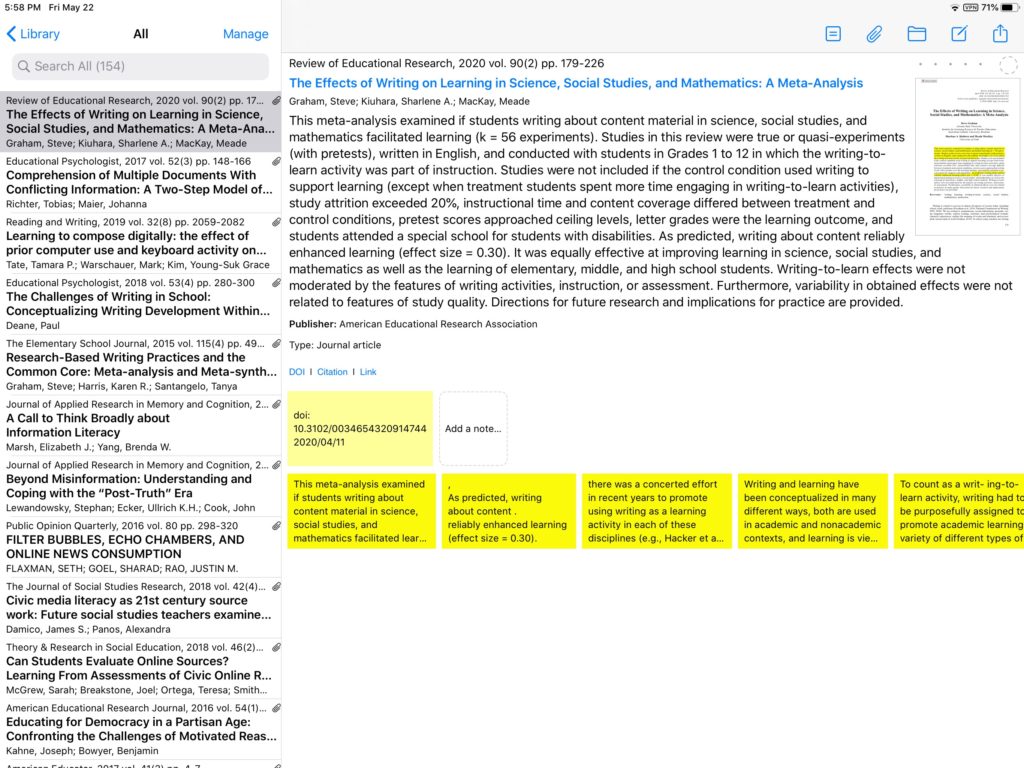
Diigo
Diigo is a social bookmarking tool with some useful additional feature. It bookmarks web pages and stores the highlights from these web pages (first image). It also connects with Kindle to download the highlights and annotations from Kindle books (second image). Diigo has a built-in outliner allowing the selection of content from stored highlights to be integrated into an outline. Each highlight transferred to the outline contains the identity of the original source.
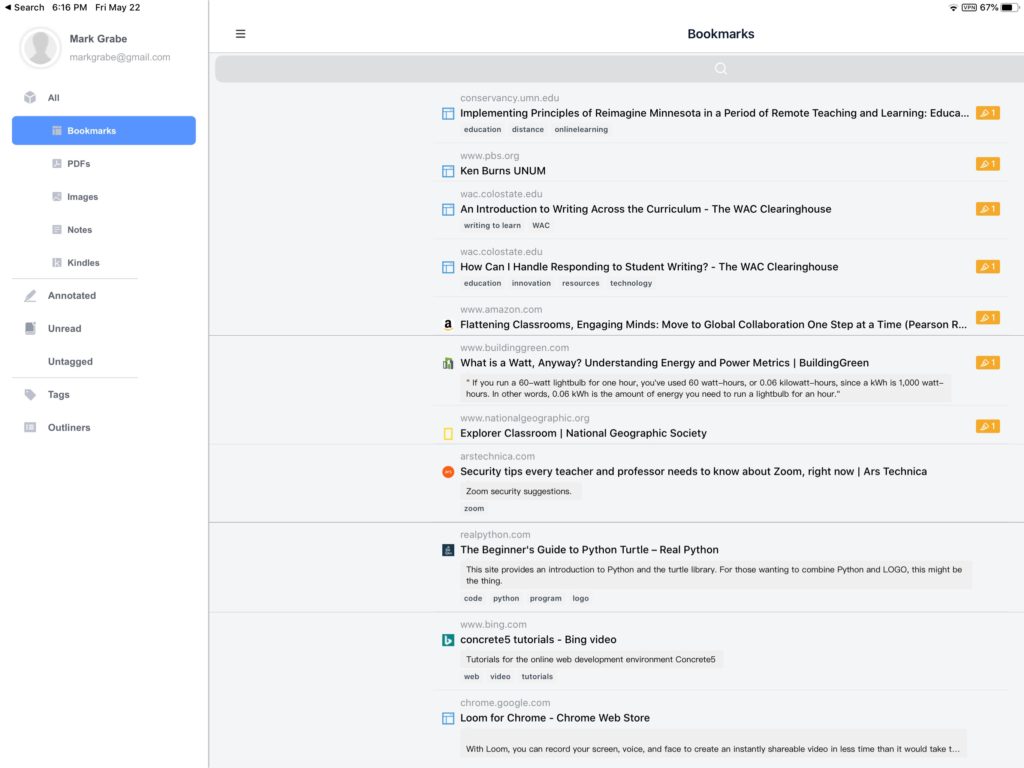
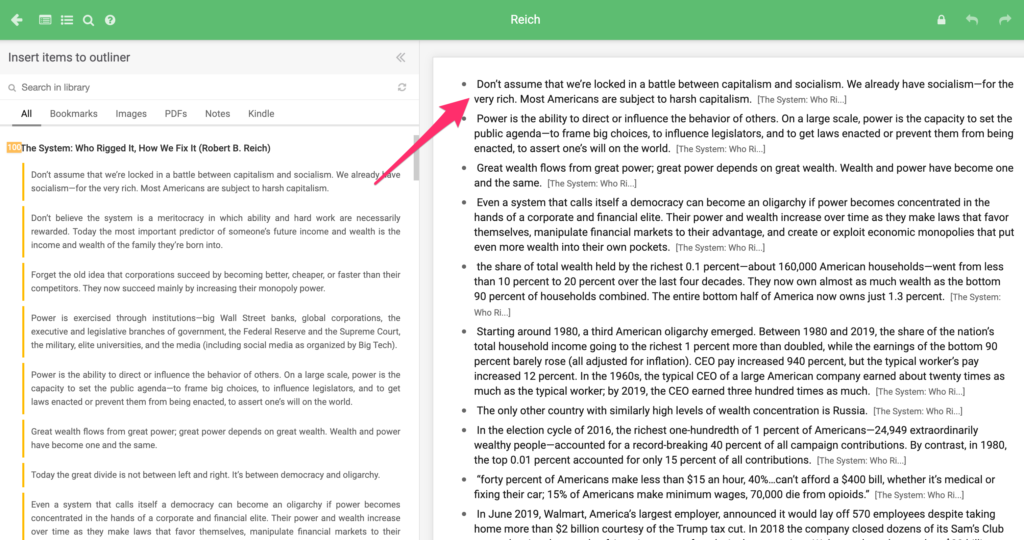
Mendeley
Mendeley is a service for storing and annotating pdfs. I use Mendeley for saving and organizing pdfs that are not journal articles.
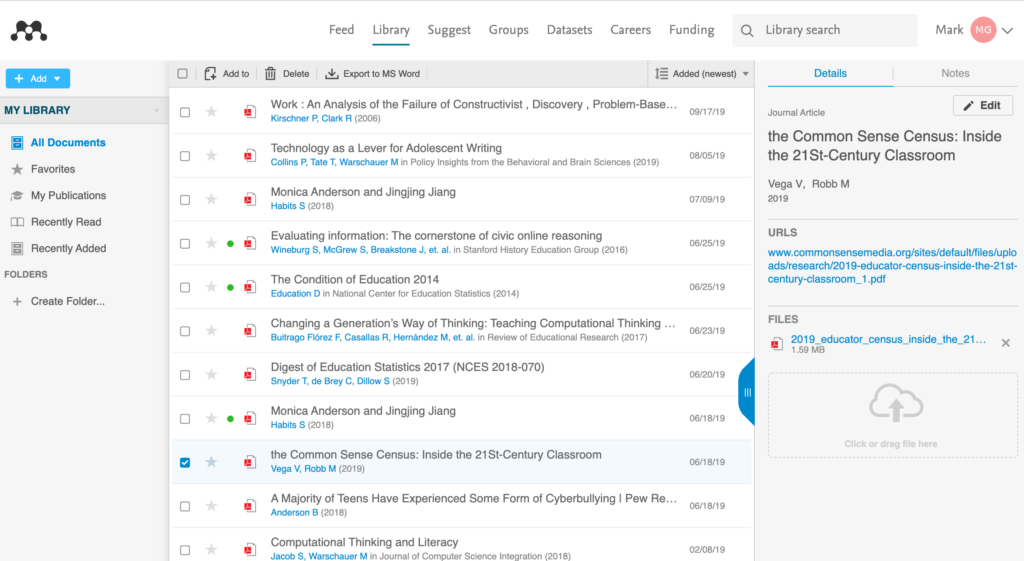
Skim
Skim is an open-source I use when I want to highlight and annotate a single pdf for immediate use. Skim shows the highlights in a column allowing an efficient way to review the highlighted comments in context.
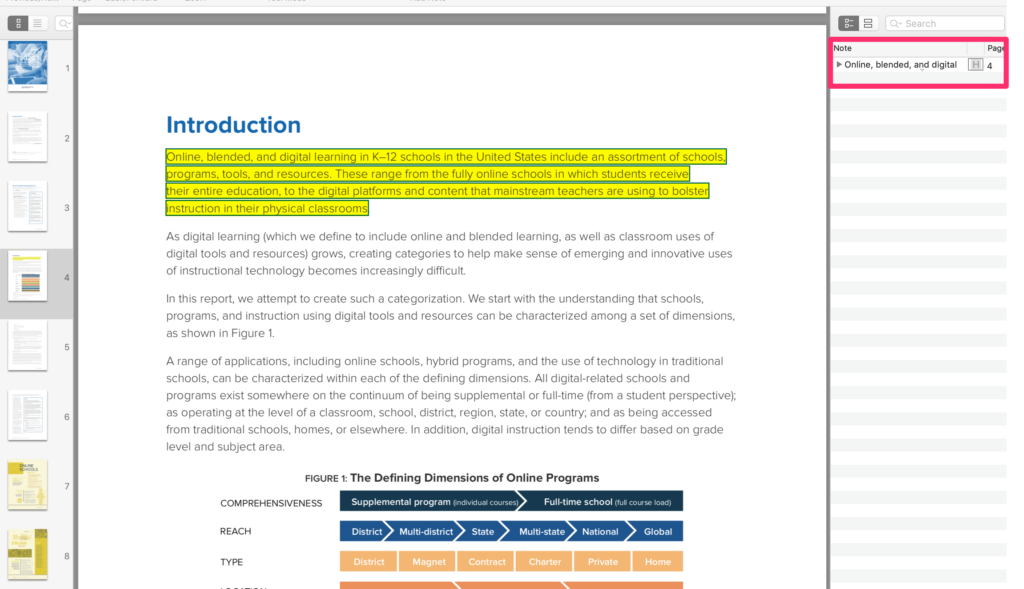
![]()

You must be logged in to post a comment.